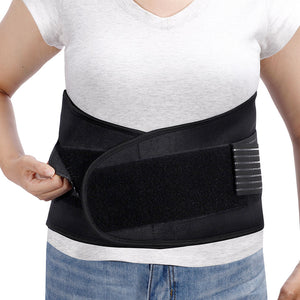What to Do with Knee Pain?

This article's goals are to give the reader a general understanding of the various causes of knee pain and offer advice on how to relieve it. The article by fivalifitness also emphasizes the importance of seeking medical care for persistent or worsening knee pain, as well as strategies for preventing future knee pain.
fivalifitness.com
Causes
Knee pain is common in people of all ages and can be brought on by some different things. Comprising bones, cartilage, ligaments, tendons, and synovial fluid, the complex structure of the knee joint facilitates movement while offering support and stability. Any of these parts that are harmed or inflamed can cause knee pain. Knee pain may result from the following possible causes:
- Injury: For example, a torn meniscus, sprained or torn ligaments, or tendonitis.
- Overuse or strain: These include iliotibial band syndrome and running-related knee pain
- Arthritis: This category includes osteoarthritis, rheumatoid arthritis, and gout.
- Tendonitis: An inflammation of the tendons that connect the muscles and bones in and around the knee joint.
- Bursitis: An inflammation of the small fluid-filled sacs (bursae) that cushion the outside of the knee joint.
When to Seek Medical Attention
Seeking medical attention is imperative if knee pain worsens or persists, as it may indicate a more serious condition. The following are a few indications and symptoms that need to be taken seriously:
- Pain in the knee that is persistent or chronic and does not go away with rest or over-the-counter medications.
- The knee joint may experience swelling, redness, or warmth to the touch.
- Having trouble walking or carrying weight on the injured knee.
- A cracking or breaking sensation in the knee joint.
- limited mobility or stiffness in the knee joint.
Treatment Options
Options for treating knee pain could include:
- Medication: Corticosteroids, hyaluronic acid injections, or non-steroidal anti-inflammatory drugs (NSAIDs) are a few examples of medications that can be used to treat pain and inflammation.
- Physical therapy: A regimen of stretches and exercises intended to increase the range of motion and strengthen the muscles surrounding the knee joint.
- Program for rehabilitation: To aid in the healing and recovery from the injury, it might involve hydrotherapy or other specialized activities.
- Surgery: To replace or repair damaged knee tissue in more extreme cases, surgery may be necessary.
- Supportive devices: These include compression knee sleeves and braces, which ease joint stress and offer support.
The severity of the symptoms, the underlying cause of the pain, the patient's general health, and their medical history will all influence the available treatment options. A medical professional can suggest a course of treatment based on these variables. To guarantee appropriate healing and recovery, it's crucial to adhere to the prescribed treatment plan and show up for follow-up appointments.
fivalifitness.com
Reference
Knee pain | Causes, treatments and self-management
Knee Pain: Causes, Symptoms & Treatment - Cleveland Clinic
7 Easy Knee Pain Relief Treatments - Ask Doctor Jo - YouTube
*Disclaimer
The information provided in articles written by Fivali is intended for educational and reference purposes only. The content on this website (www.fivalifitness.com) is not intended to diagnose, treat, cure, or prevent any disease. We do not recommend self-diagnosis or self-treatment based on the information provided in our articles. Always consult a qualified healthcare professional if you have any concerns about your health or well-being.
If you are experiencing any symptoms or discomfort, we strongly encourage you to seek medical attention from a qualified healthcare professional. Only a licensed healthcare practitioner can provide an accurate diagnosis and appropriate treatment plan tailored to your individual needs.
-
Posted in
Healthy Lifestyle, Joint, Pain













